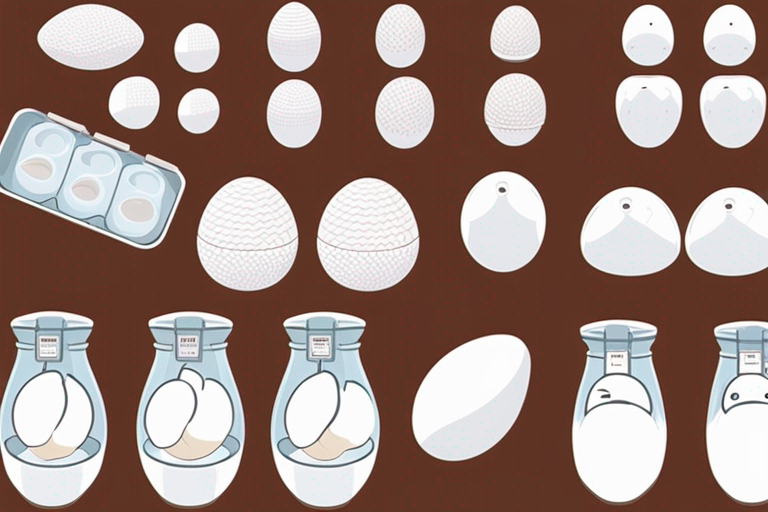
Preserving Balut Fertilized Duck Egg Freshness: Tips and Techniques
Get Your Free Food Safety Cheat Sheet
30 most common foods with instant answers. Print it and stick it on your fridge—completely free!
Preserving Balut Fertilized Duck Egg Freshness: Tips and Techniques
Balut fertilized duck eggs are a popular delicacy in many Asian countries, known for their unique taste and nutritional benefits. However, due to their perishable nature, it is essential to know the best ways to preserve their freshness to ensure food safety and enjoyment. In this blog post, we will explore practical tips and techniques to help you store balut fertilized duck eggs properly. (Balut fertilized duck egg)
Understanding Balut Fertilized Duck Eggs
Before diving into preservation methods, let's first understand what balut fertilized duck eggs are. Balut is a fertilized duck egg that is incubated for a specific period before being cooked and consumed. The embryo inside the egg is at varying stages of development, ranging from a few days to a few weeks. Balut is a good source of protein, vitamins, and minerals, making it a popular street food and snack in many countries.
Importance of Proper Storage
Proper storage of balut fertilized duck eggs is crucial to maintain their freshness and prevent the risk of foodborne illnesses. Improper storage can lead to bacterial contamination and spoilage, compromising the quality and safety of the eggs. By following the right storage techniques, you can extend the shelf life of balut and enjoy them at their best.
Tips for Preserving Balut Fertilized Duck Egg Freshness
Here are some practical tips and techniques for storing balut fertilized duck eggs to maintain their freshness:
-
Refrigeration: Store balut eggs in the refrigerator at a temperature between 35-40°F (1.6-4.4°C) to slow down bacterial growth and maintain their quality.
-
Use airtight containers: Place the balut eggs in airtight containers or ziplock bags to prevent odors from other foods in the fridge from affecting them.
-
Labeling and dating: To keep track of the freshness of the balut eggs, label the containers with the date of purchase or preparation. Use the oldest eggs first to prevent wastage.
-
Avoid direct sunlight: Store balut eggs away from direct sunlight or heat sources to prevent them from spoiling quickly.
-
Rotate stock: If you have multiple balut eggs, rotate the stock by using the oldest ones first. This practice ensures that none of the eggs are left unused for an extended period.
Safety Precautions
When storing and consuming balut fertilized duck eggs, it is essential to follow these safety precautions to reduce the risk of foodborne illnesses:
-
Check for freshness: Before storing or consuming balut eggs, inspect them for any signs of spoilage, such as off smells or discoloration.
-
Cook thoroughly: When preparing balut eggs, ensure they are cooked thoroughly to kill any harmful bacteria that may be present.
-
Wash hands: Remember to wash your hands thoroughly before handling balut eggs to prevent cross-contamination.
-
Avoid raw consumption: It is best to avoid eating raw balut eggs to reduce the risk of foodborne illnesses.
Conclusion
In conclusion, preserving the freshness of balut fertilized duck eggs requires proper storage techniques and safety precautions. By refrigerating the eggs, using airtight containers, and following hygiene practices, you can enjoy balut at its best while minimizing the risk of foodborne illnesses. Remember to check for freshness before consumption and cook the eggs thoroughly to ensure food safety. By following these tips, you can savor the unique taste and nutritional benefits of balut eggs with peace of mind.
For more information on balut fertilized duck eggs, visit our balut fertilized duck egg page. (Balut fertilized duck egg)

Authoritative Food Safety References
These agencies and university labs inform every tip and health precaution we publish.
USDA FoodKeeper – Cold Storage Guidelines
Official refrigerator, freezer, and pantry timelines maintained by the U.S. Department of Agriculture.
Visit USDA FoodKeeperFDA Produce Safety Rule & Grower Guidance
Field-to-fridge handling practices that prevent contamination of fruits, vegetables, and leafy greens.
Visit FDA Produce SafetyCDC Foodborne Illness Prevention Hub
Surveillance-backed guidance on pathogens, symptoms, and steps to reduce foodborne illness risk.
Visit CDC Food SafetyUC Davis Postharvest Technology Center
University research detailing optimal storage atmospheres for produce after harvest.
Visit UC Davis PostharvestPenn State Extension – Home Food Preservation & Safety
Peer-reviewed extension bulletins on safe canning, chilling, and reheating practices.
Visit Penn State ExtensionCan balut fertilized duck eggs be frozen to extend their shelf life?
How can I tell if a balut fertilized duck egg is still fresh?
Can I reheat balut fertilized duck eggs after they have been cooked?
Are there any tips for preserving the freshness of balut fertilized duck eggs during transportation?
Get Your Free Food Safety Cheat Sheet
30 most common foods with instant answers. Print it and stick it on your fridge—completely free! Want more? Upgrade to the complete guide with 70+ foods.
Scan your food directly and get instant safety info using our AI-powered camera feature.